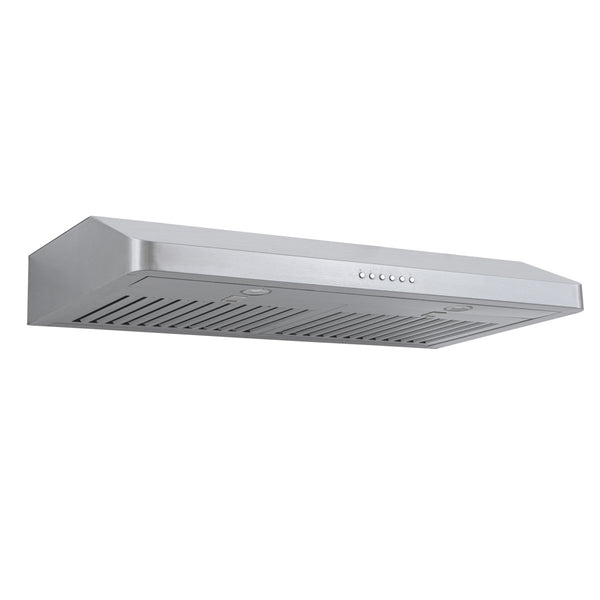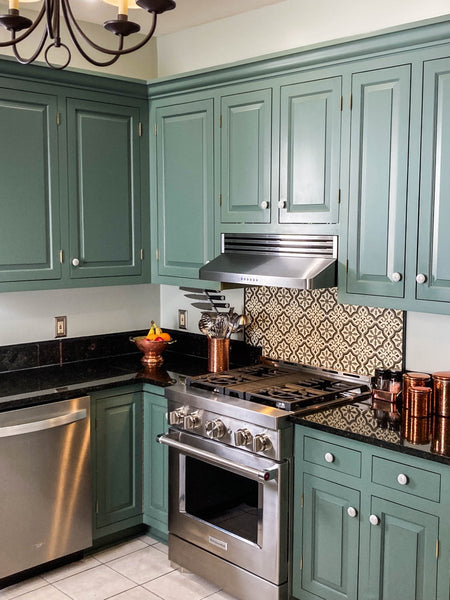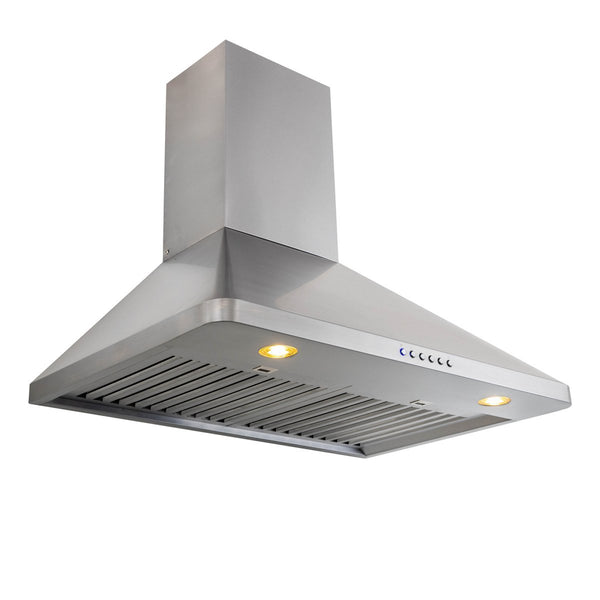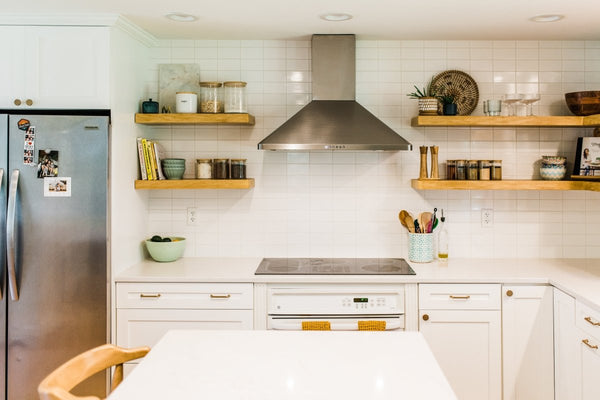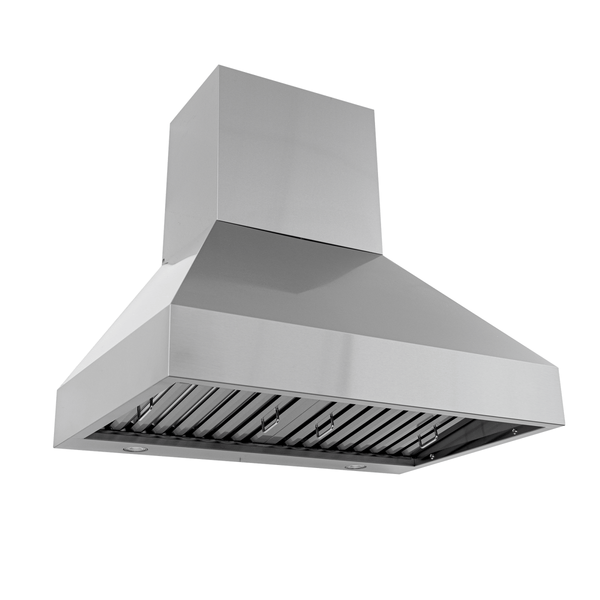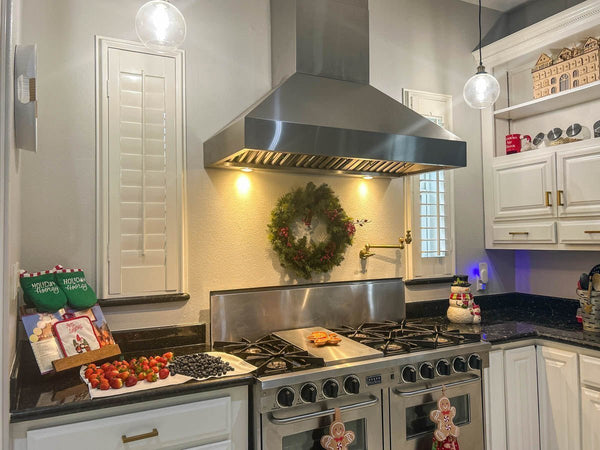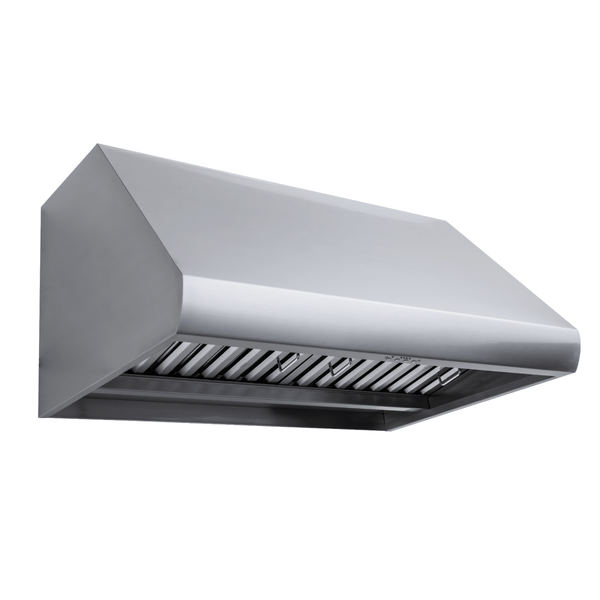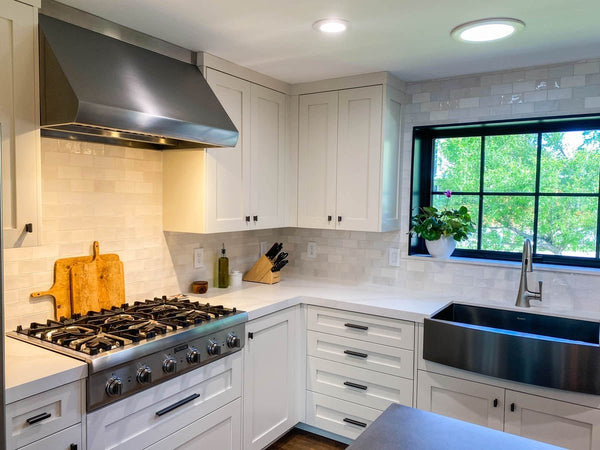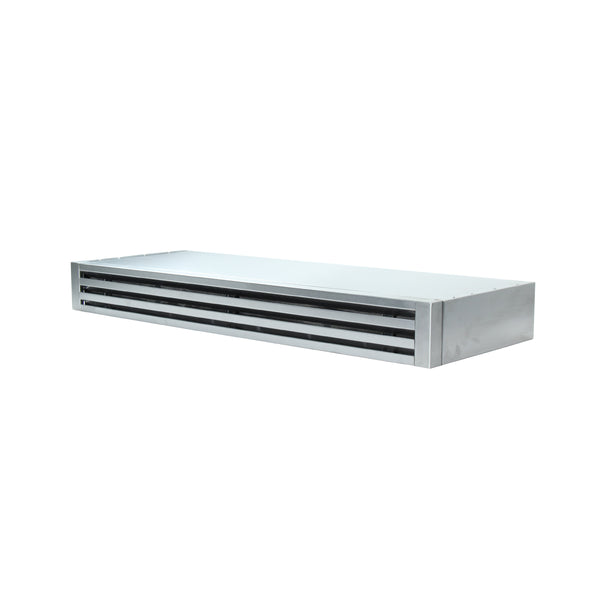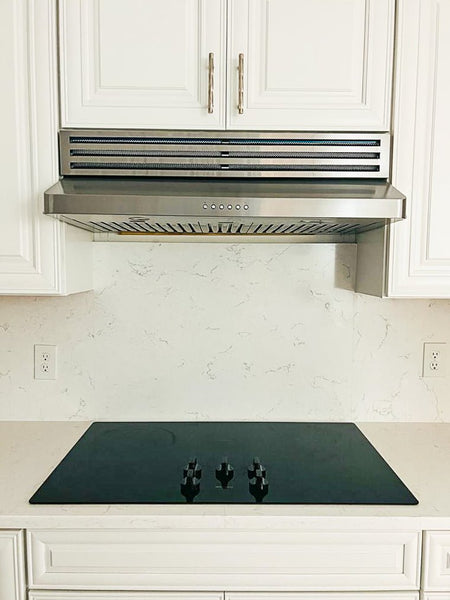Greasy kitchens can be a real headache but don't worry – with the right techniques, you can have your cooking space looking spick and span in no time! Deep cleaning your kitchen can feel like a daunting task, so it's important to approach it methodically and to break the job down into manageable sections. In this article, we'll share some expert tips that will help you effectively tackle the built-up grease and grime, and how to clean a greasy kitchen, leaving you with a clean kitchen that shines like new.
First, let's talk about why deep cleaning a greasy kitchen is essential. Not only does it improve the overall appearance of your cooking area, but it also helps maintain a healthier and more hygienic space for food preparation. Frequent cooking and frying can cause grease to accumulate on surfaces such as stovetops, countertops, and cabinets; if left unchecked, this buildup can become stubborn and harder to remove. Moreover, excess grease can also lead to unpleasant odors and even pose a fire hazard. With this in mind, giving your kitchen a thorough cleaning is definitely worth the effort!
Make cleaning your kitchen a breeze with our recommended kitchen degreasers.
As you begin your deep cleaning journey, remember to gather the necessary supplies, which may include items like cleaning agents, sponges, and microfiber cloths. It's essential to use the right tools and products to break down grease effectively and without causing damage to your wood kitchen cabinets and surfaces. Now, let's dive into the practical steps you can take to tackle those greasy areas and bring out the best in your kitchen. Stay tuned as we guide you through the cleaning process, helping you transform your space into the sparkling haven you deserve.
Kitchen Cleaning Supplies
Essential Tools
To deep clean your greasy kitchen, you'll need a few essential tools on hand. These will help you tackle every part of your kitchen effectively:
- Sponges: You'll need non-scratch sponges to scrub surfaces without damaging them.
- Microfiber cloths: These cloths are great for wiping down surfaces and absorbing moisture. They help remove grease and grime without scratching.
- Spray bottle: A spray bottle will come in handy for applying cleaning solutions to surfaces.
- Bucket: A bucket is perfect for holding warm water and cleaning solution. It will also serve as your mop station when moving from one area to another.
- Bowl: Use a bowl for mixing small batches of cleaning solutions or soaking small items.
Cleaning Solutions
A few cleaning solutions will work wonders on removing grease and grime from your kitchen. Here are some effective options to keep on hand:
- Warm water: Warm water helps loosen and dissolve tough grease. Fill your bucket with warm water and add some dish soap for a soapy cleaning solution.
- Dish soap: Dish soap is designed to break down and remove grease. Use it with warm water or mix it with other cleaning agents like vinegar or baking soda to create powerful solutions.
- Baking soda: Baking soda is an excellent natural abrasive cleaner. Mix it with salt and dish soap to create a scrubbing paste for stubborn grease stains.
- Vinegar: Distilled white vinegar is great for cutting through grease and grime. Mix it with water in a spray bottle and use it as an all-purpose cleaner.
- Cleaning solution: Some commercial cleaning solutions, like all-purpose cleaners or degreasers, can be powerful tools for tackling kitchen grease. Always read labels and follow directions to ensure safe and effective use.
When deep cleaning your greasy kitchen, remember to change your water and cleaning solution regularly. This will ensure you're working with fresh, effective cleaning agents to get your kitchen sparkling clean again.
Tackling Greasy Surfaces
Appliances
For greasy appliances like stovetops and ovens, a DIY degreaser can work wonders. Mix equal parts baking soda and dish soap with 20 drops of orange essential oil. Apply the mixture to the appliance, let it sit for 10 minutes, and scrub with a damp sponge. The d-limonene in the essential citrus oil helps lift stubborn grease from surfaces, making it easier to remove.
Another option for cleaning appliances is to use undiluted vinegar. Fill a spray bottle with vinegar, spray it on the greasy surface, allow it to sit for 5 to 10 minutes, and then wipe it down with a dishcloth, paper towel or non-abrasive, soft sponge again.
Cabinet Fronts
Cleaning greasy cabinet doors and fronts can be tackled using a solution of simple mix of warm water and dish soap. Dish soap has excellent degreasing properties, making it a great option for this task.
Alternatively, you can use Murphy Oil Soap. Fill a bucket with warm water and add the oil soap. Use a cleaning rag to wipe the cabinets with the solution. Rinse and repeat if necessary to remove any residual grease or residue left behind.
Countertops
Consider using a mix of baking soda and water to clean and remove grease stains from countertops. Add a paste with equal parts of the two ingredients to the stain. Allow the paste to sit for about 5 minutes, then gently scrub with a damp sponge or cloth until the surface is clean. Rinse with water to gently remove any residue.
If your countertops are still showing stubborn grease stains, try using a solution of dish soap and white vinegar. The vinegar can help break down grease, while the dish soap directly lifts it away. Mix equal parts dish soap and white vinegar in a spray bottle, apply to the stain, allow it to sit for a few minutes, and then scrub clean with a sponge or cloth.
Remember to use a friendly tone of voice and always speak from experience. By following these tips and using the right cleaning methods, you can make your kitchen look great and remove stubborn grease stains from surfaces. Enjoy a cleaner, fresher space in which to enjoy your cooking adventures!
Cleaning Methods
Vinegar and Water Solution
One effective method for cutting through grease in your kitchen is to use a vinegar and hot water solution. Combine equal parts of distilled white vinegar and warm water in a bucket or pail. The vinegar's acidity helps break down the grease, making it easier to remove. Use a soft cloth or sponge to gently scrub the greasy surfaces in your kitchen with the vinegar solution. Be sure to rinse the cloth frequently as you work to keep it clean and fresh.
Baking Soda and Dish Soap Mixture
Another powerful cleaning solution for tackling kitchen grease is a mixture of baking soda and dish soap. Mix 1 cup of baking soda with 3 cups of water and 1 cup of vinegar in a bowl. Additionally, add ½ cup of dish soap to the mixture. Soak a clean cloth in the solution, then use it to scrub your greasy kitchen surfaces, particularly on areas with stubborn stains. After cleaning, rinse the surfaces thoroughly and wipe them dry with a clean cloth.
Commercial Degreasers
If your kitchen is particularly greasy, you may want to consider using a commercial degreaser. These products are specifically formulated to break down and remove grease buildup. Be sure to follow the manufacturer's instructions on how to apply and use the degreaser properly. Using a commercial degreaser ensures that your kitchen gets a thorough, deep clean without any residues left behind.
Remember that these cleaning methods will help you effectively tackle grease in your kitchen. Use each method as needed and your kitchen will be sparkling and grease-free in no time.
Cleaning Tips and Tricks
Spot Testing
Before you start cleaning your greasy kitchen, performing a spot test on different surfaces, especially on painted areas and cabinet fronts is essential. Apply a small amount of your chosen cleaning solution to an inconspicuous area and wait for a few minutes to see if any discoloration or damage occurs. This will help ensure that your cleaning products are safe for the surfaces in your kitchen.
Preventing Grease Build-Up
One of the best ways to both cut grease and maintain a clean kitchen is to prevent grease build-up in the first place. When cooking, make sure to use a splatter guard or a lid to minimize oil splatter on your stovetop and surrounding surfaces.
Keep paper towels and sponges handy to clean up grease and spills as they occur. Wipe down your stovetop and countertops after each use to help reduce the amount of grease that accumulates over time.
Regularly clean your range hood filters to prevent grease build-up and ensure that your hood is working efficiently.
In addition to these prevention tips, it's also essential to deep clean your kitchen periodically. To do this, follow these simple steps:
- Remove knobs, grates, and other removable parts from your stovetop and wash them with warm water and dish soap. This will help to remove dirt and grease.
- Use an all-purpose cleaner to wipe down countertops, cabinet fronts, and other surfaces. Be mindful to use a fresh, clean towel to avoid spreading grease and dirt.
- Thoroughly clean your kitchen sink with baking soda and a wet sponge, followed by a warm water rinse to keep it shiny and spotless.
By incorporating these cleaning tips and tricks into your routine, you'll be able to keep your kitchen looking clean and grease-free!
How to Clean Grease FAQs
What is the best cleaning solution for greasy cabinets?
You can use Murphy Oil Soap diluted in warm water to clean the greasy cabinets. Fill a bucket with warm water and add the soap. Wipe the cabinets with a clean rag soaked in the cleaning solution. You can expect to spend around 2 1/2 minutes per greasy cabinet to get them sparkling clean.
How do I remove grease from my kitchen backsplash?
A vinegar and baking soda paste is effective in removing grease from kitchen backsplashes. First, mix vinegar and water in a spray bottle. Spray the solution onto the greasy area, but don't let it sit for too long to avoid dripping. Use a sponge or cloth to wipe away the grease.
What is a homemade degreaser for kitchen surfaces?
You can mix 1 cup of vinegar, 3 cups of water, 1 cup of baking soda, and ½ cup of dish soap in a deep bowl to make your own degreaser. Dip a clean cloth in the bowl and use it to clean the greasy surface. This effective degreaser solution can be applied directly with dry cloth or to the surface from the bowl.
Here are some other DIY degreaser options:
- Combine equal parts baking soda and dish liquid with 20 drops of orange essential oil. Apply the mix to the surface, let it sit for 10 minutes, and scrub with a damp sponge. The d-limonene in the essential oil helps lift stubborn grease.
- For light grease, mist the cabinets with a vinegar solution. For moderate grease, use a grease-cutting dish soap or laundry detergent. For severe grease, make a paste from baking soda and vegetable oil. These methods help in cleaning greasy kitchen cabinets effectively.
Remember to always test any cleaning solution on an inconspicuous area first to avoid damage to your clean kitchen cabinets or surfaces.
Professional Cleaning Services
If you're overwhelmed by the task of deep cleaning your greasy kitchen, consider hiring professional cleaning services. These experts have the know-how and tools necessary to tackle even the toughest grease stains, making your kitchen spotless once again.
There are various companies offering such services, like Merry Maids, who can provide weekly, bi-weekly, or monthly cleanings, depending on your needs. Before you commit to any service, make sure to inquire about their prices, as different companies and service frequencies may have different cost structures.
The benefits of hiring a professional cleaning service for your kitchen include:
- Comprehensive cleaning: Professionals use specialized equipment, techniques, and cleaning agents to ensure that every nook and cranny of your kitchen is thoroughly cleaned.
- Time savings: A deep clean by professionals can free up your time for other tasks or allow you to relax and enjoy your spotless kitchen.
- Health benefits: A clean and grease-free kitchen reduces the risk of pests, mold, and bacteria, contributing to a healthier living environment.
When selecting a professional cleaning service, keep the following factors in mind:
- Commission structure: Some companies may charge a flat fee, while others may have tiered pricing depending on the level of service required. Make sure to understand their pricing model before making a decision.
- Reviews and reputation: Look for reviews and recommendations from friends, family, or the internet to ensure you're hiring a reputable company.
- Customizable services: Find a company that offers customizable cleaning plans catering to your specific needs and preferences.
Remember, it's crucial to communicate your expectations and requirements with the cleaning service so they can deliver the best results. By entrusting the deep cleaning of your greasy kitchen to professionals, you can save time and effort while ensuring a comprehensive and satisfactory outcome.
Just Remember
When cleaning kitchen cabinets, especially those made of wood, it's important to use suitable cleaning materials. While harsh chemicals may seem like the obvious choice for tough grease stains and grease splatters, they can damage the finish of your cabinets. Instead, opt for a natural degreaser like a few drops of olive oil or a mixture of Murphy's oil soap and kosher salt in soapy water. Apply the solution with a clean microfiber cloth and use elbow grease to scrub away the grease. Then, wipe clean with a damp cloth to remove any residue.
If you have painted cabinets, be even more careful with your cleaning methods. Use a clean damp cloth to gently wipe down the cabinets, being careful not to scrub too hard or use any abrasive materials that could scratch the paint. Try dissolving grease with castile soap and warm water for tough grease stains. Apply the solution with a clean microfiber cloth and use elbow grease to scrub away the grease. Then, wipe clean with a damp cloth to remove any residue. Don't forget to clean the kitchen walls around your cabinets, using the same gentle cleaning methods to keep your kitchen looking clean and grease-free.
